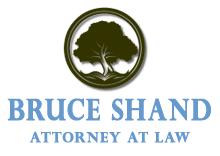Your IRA Could Ruin Your Eligibility For Utah Medicaid
The rules regarding IRAs and Medicaid are complicated and vary from state to state. You should talk to your attorney about your IRA to determine the best course of action for you.
For many of us and the older loved ones for whom we may care, receiving needed medical care in old age will mean ensuring an easy transition into Medicaid. The problem, however, is that there are some strict financial rules governing eligibility to receive Medicaid benefits. Consequently, it is often all-too-easy to run afoul of them. Here is an important question to ask: “Can an IRA Affect Medicaid Eligibility?”
ElderLawAnswers posed and answered this question, or did they? Their answer does not apply to 14 states in the Union. In those 14 states, known as 209(b) states, (Connecticut, Hawaii, Illinois, Indiana, Minnesota, Missouri, Nebraska, New Hampshire, North Carolina, North Dakota, Ohio, Oklahoma, Utah, and Virginia) the general rule is that IRAs are a ‘countable’ resource in Medicaid planning even if they are in ‘paid-out’ status. Unlike the 34 states the article refers to, a resident of one of these states (Utah) must employ an entirely different planning methodology if they wish to protect their IRA, Keogh plan, simplified employee pension (SEPs, 401(k), and employee stock ownership plan (ESOP) before eligibility can be obtained. The general rule in a 209(b) state is this: if you can cash in the asset, it is a countable resource for Medicaid eligibility. That means that the ill person, whose countable resources must be $2000 or less, to obtain eligibility could very well be forced to spend down their entire retirement savings if they do not plan correctly. The sole exception to this rule are those funds which are held in an employer-sponsored qualified pension plans — which are independently administered –these funds may not be counted to the extent that the funds are unavailable. So you can easily see why Medicaid planning with IRAs is no easy proposition for the ill person or their spouse and why asset protection planning is not a d0-it-yourself project.
While there are many viable plans to avoid IRA spend-down even in a 209(b) state for some of us it may be better to wait until we have a demonstrated need for long term care before we design a plan to protect these assets because to do otherwise means the potential of a huge tax bill. So yes, Medicaid will require you to spend-down your IRA before you can qualify for Medicaid unless you work with an elder law firm that can make these complicated rules work for you.
Reference: ElderLawAnswers (March 28, 2014) “Can an IRA Affect Medicaid Eligibility?”






